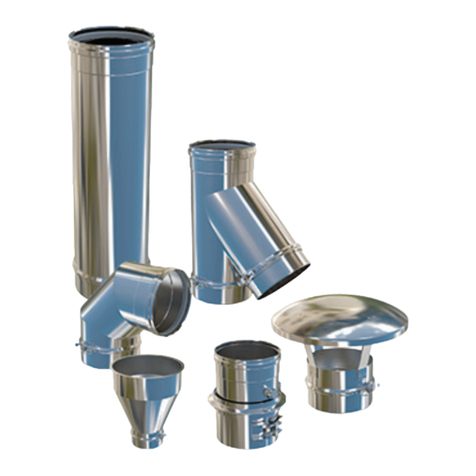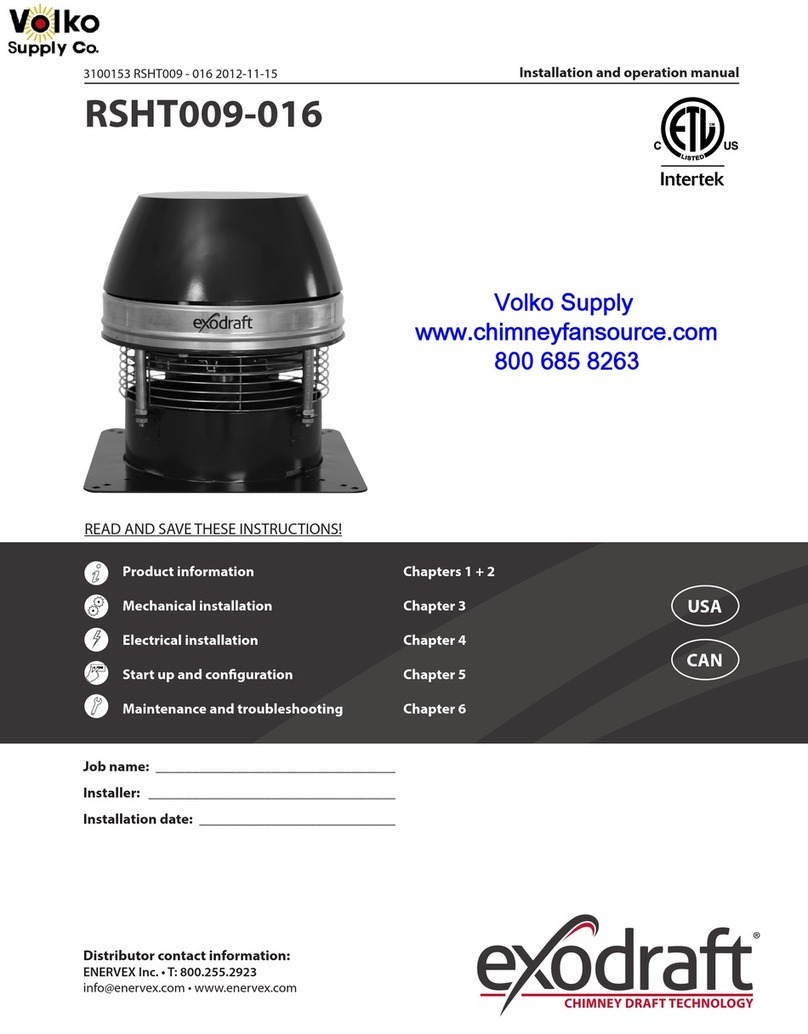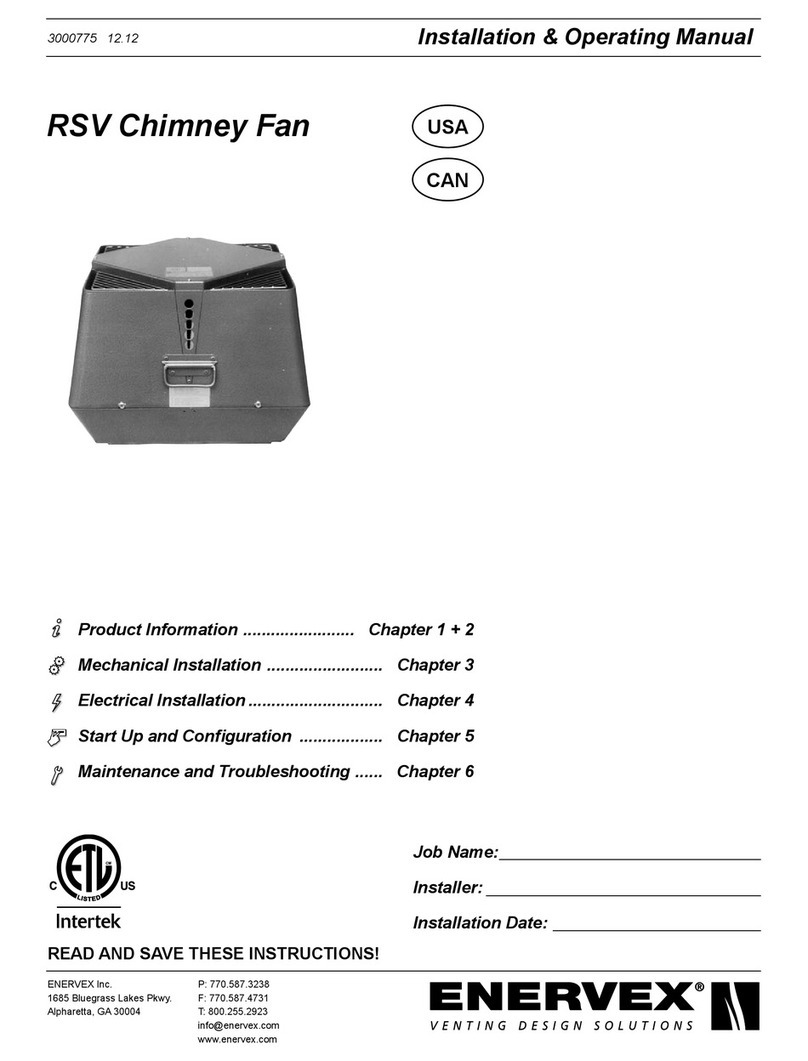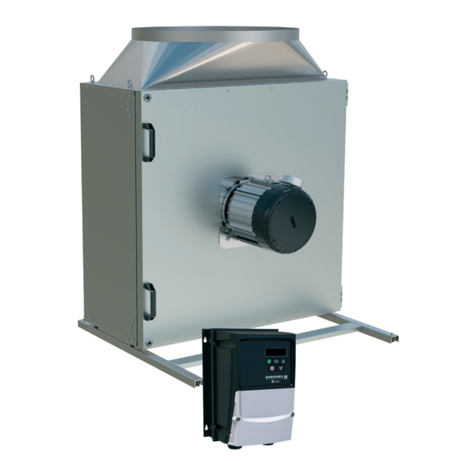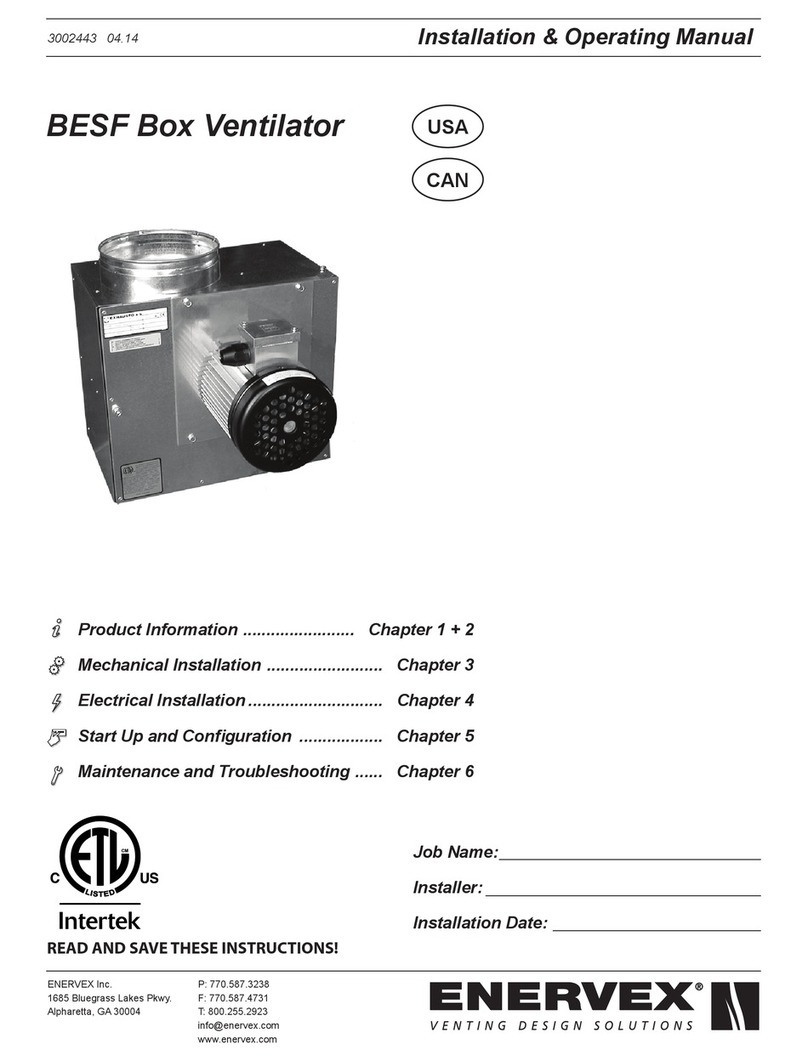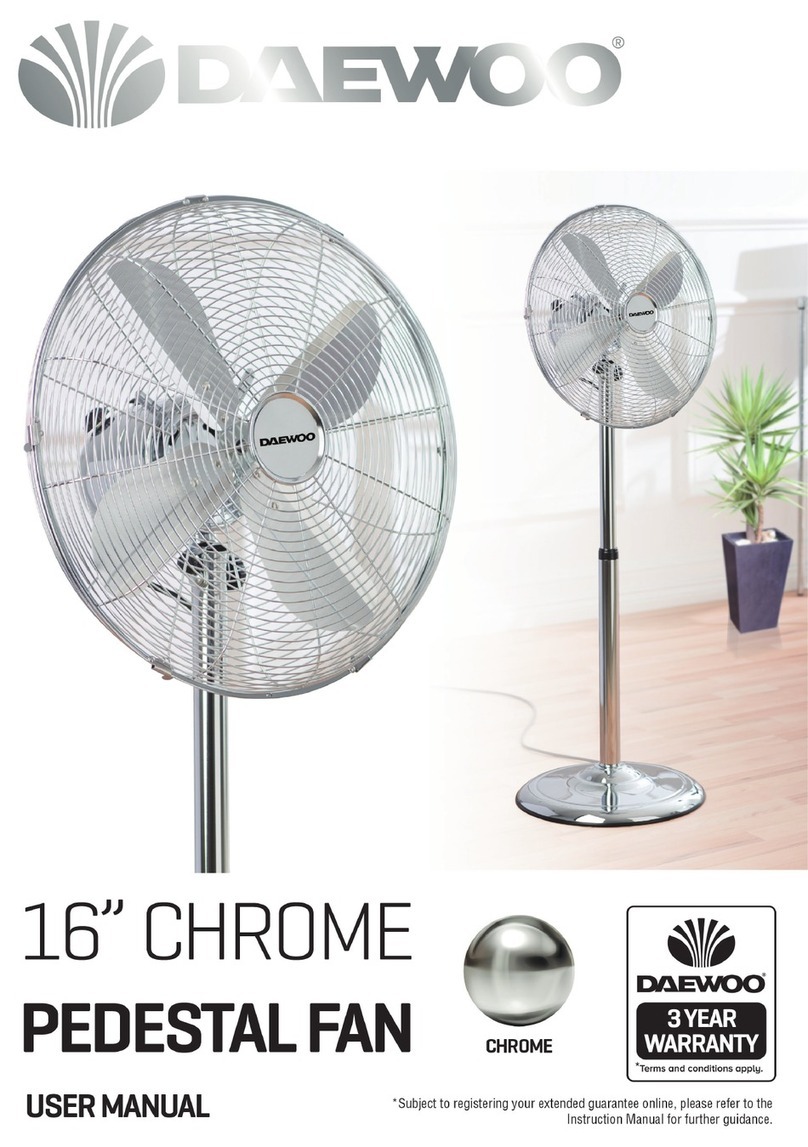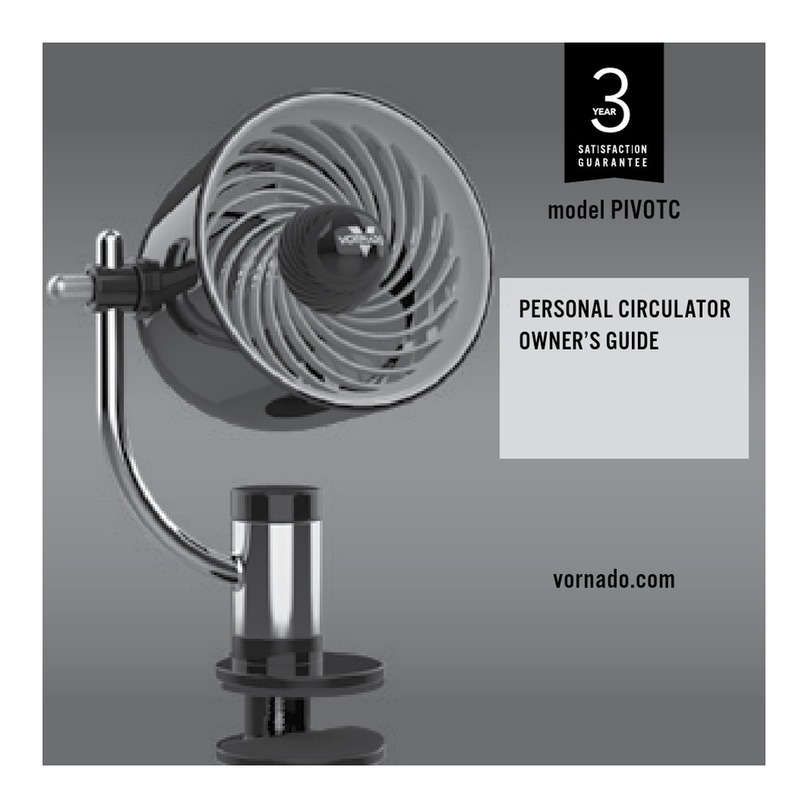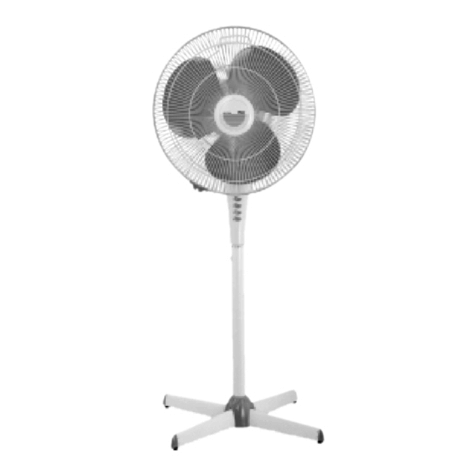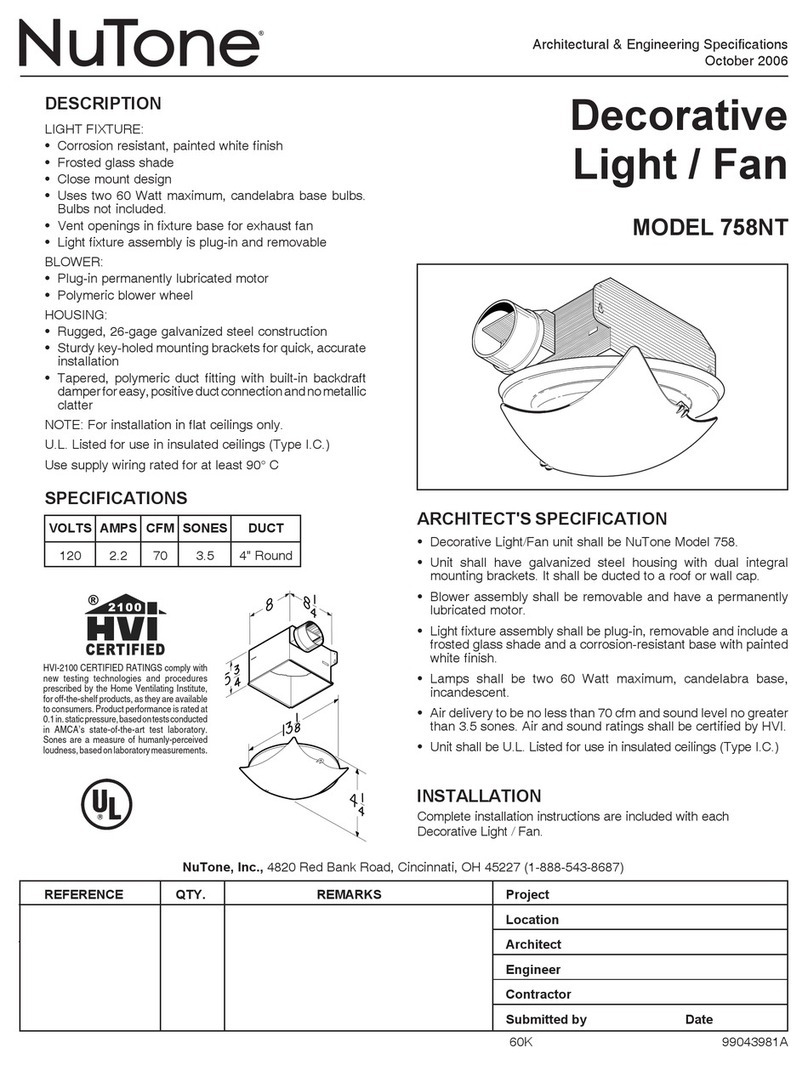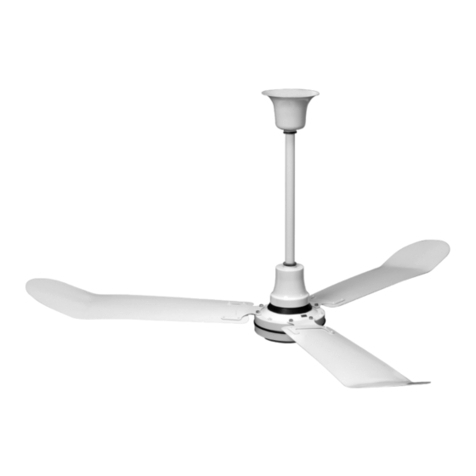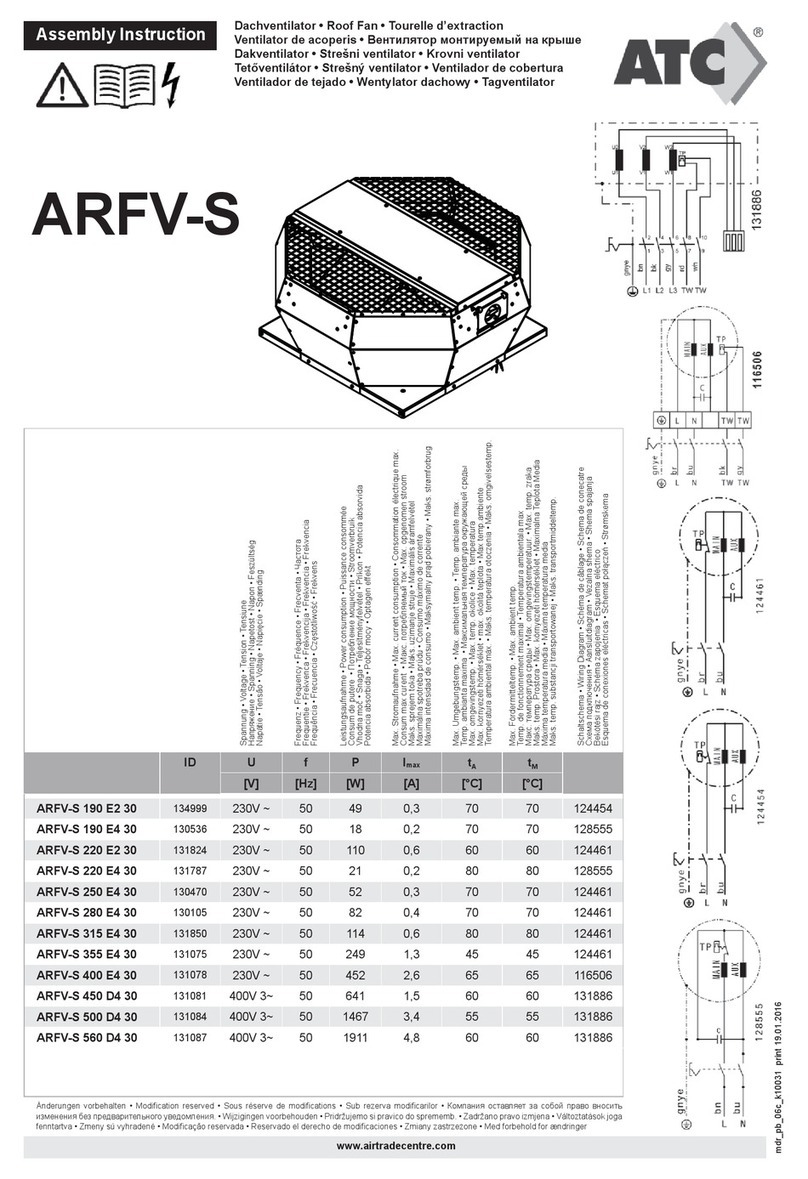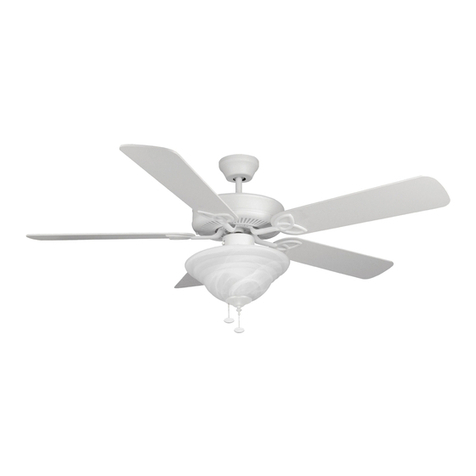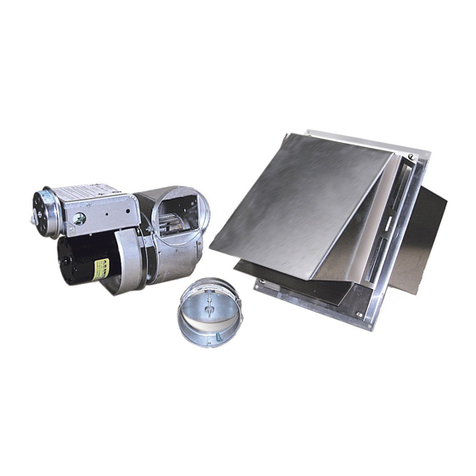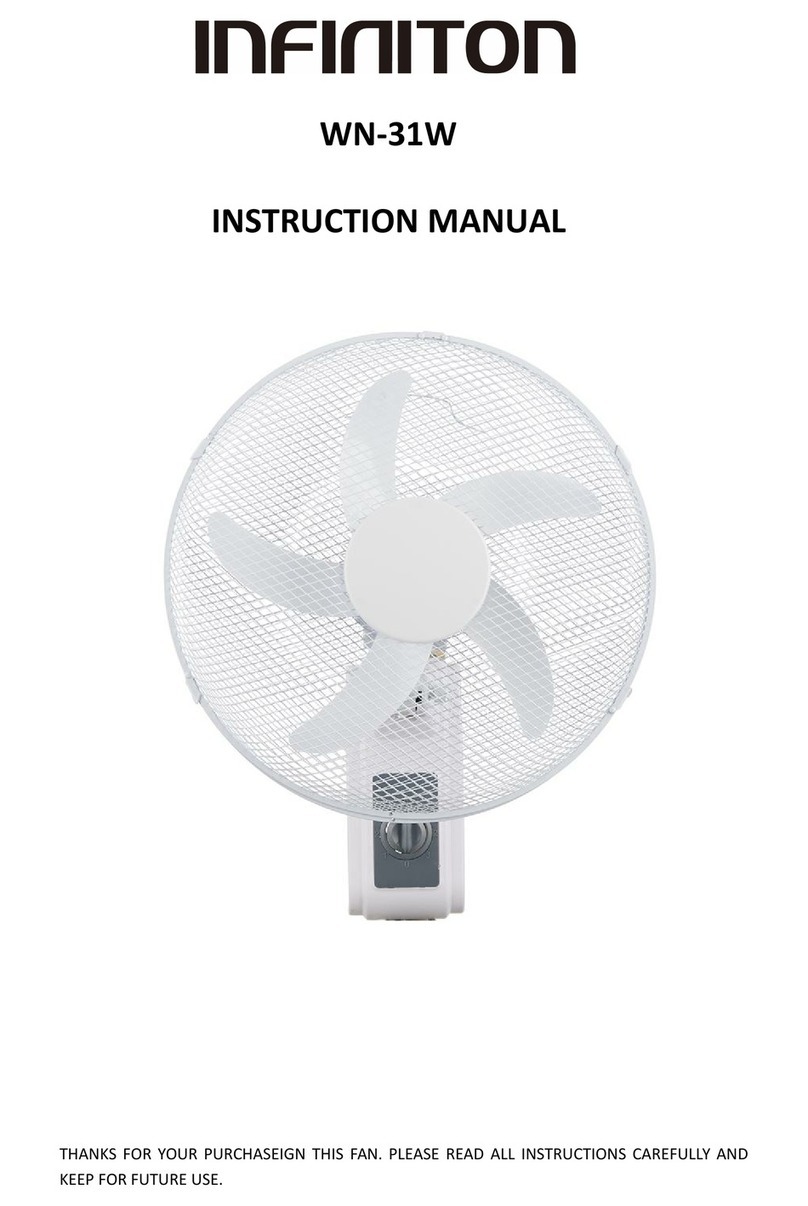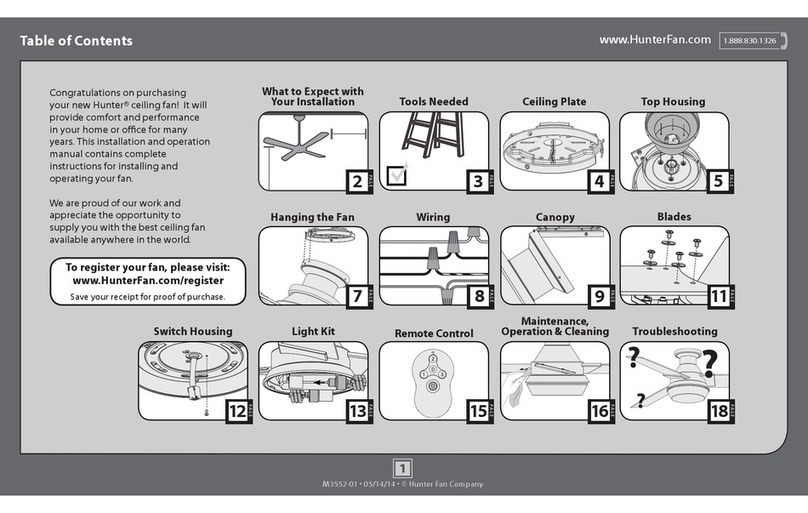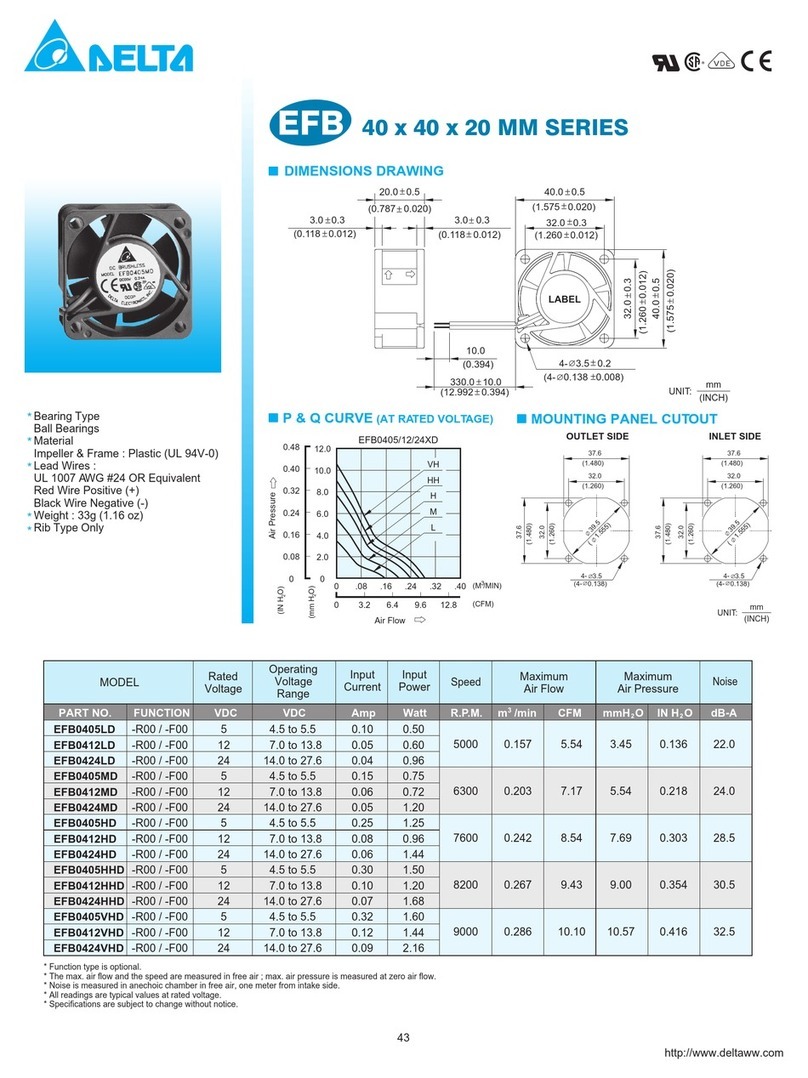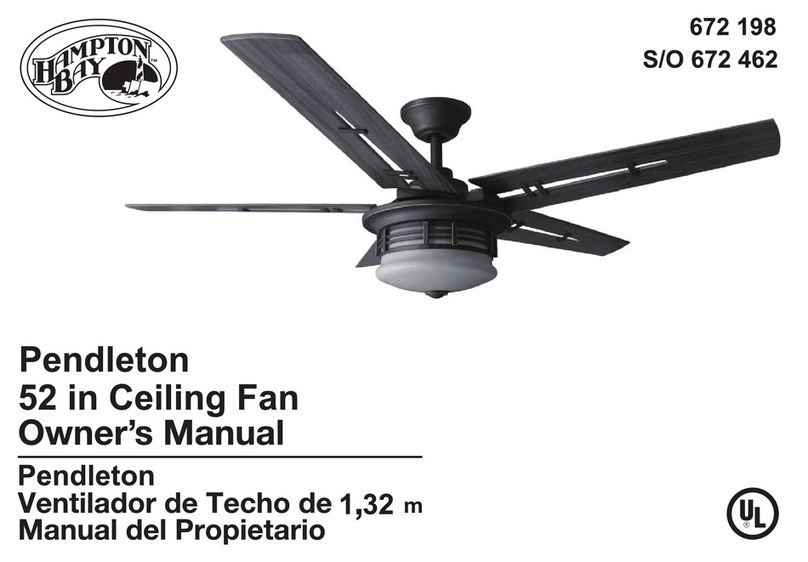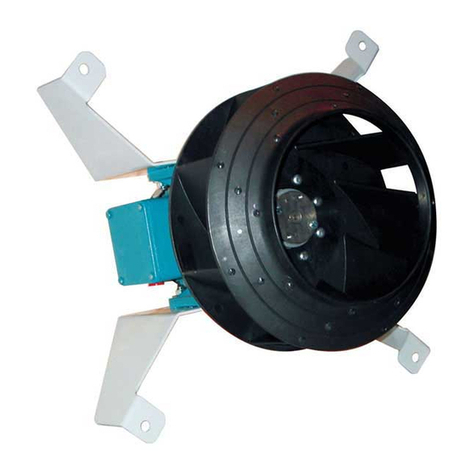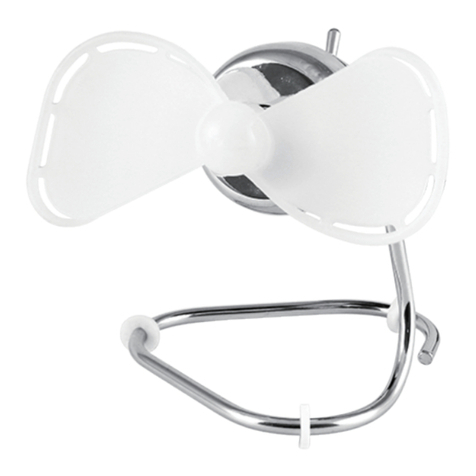ENERVEX IPVB 300 Installation instructions

ENERVEX Inc.
1685 Bluegrass Lakes
Parkway
Alpharetta, GA 30004
USA
P: 770.587.3238
F: 770.587.4731
T: 800.255.2923
www.enervex.com
3002600 08.17 Installation & Operating Manual
ENERVEX
IPVB 300-500 INLINE POWER VENTER
READ AND SAVE THESE INSTRUCTIONS!
ETL514733

2
3002600 08.17
Symbol Legend
The following terms are used throughout this manual to bring
attention to the presence of potential hazards, or to important
information concerning the product.
DANGER: Indicates an imminent hazardous
situation which, if not avoided, will result in death,
serious injury or substantial property damage.
WARNING: Indicates an imminent hazardous
situation which, if not avoided, may result in
personal injury or property damage.
DANGER: Indicates an imminent electrical shock
hazard which, if not avoided, will result in death,
serious injury or substantial property damage.
How to use this manual
This installation manual does not contain any system design
documentation. System design documentation is available
from any authorized ENERVEX representative. Accessories,
fans, and variable frequency drives are not covered by
this manual. Please refer to these component’s individual
manuals.
TO REDUCE THE RISK OF FIRE,
ELECTRICAL SHOCK OR INJURY TO
PERSONS, OBSERVE THE FOLLOWING:
1. Use this unit in the manner intended by the manufacturer.
If you have questions, contact the manufacturer at the
address or telephone number listed on the front of the
manual.
2. Before servicing or cleaning the unit, switch off at service
panel and lock service panel to prevent power from being
switched on accidentally.
3. Installation work and electrical wiring must be done by a
qualified person(s) in accordance with applicable codes
and standards.
4. Follow the appliance manufacturer’s guidelines and safety
standards such as those published by the National Fire
Protection Association (NFPA), and the American Society
for Heating, Refrigeration and Air Conditioning Engineers
(ASHRAE), and the local code authorities.
5. This unit must be grounded.
This symbol shows that ENERVEX IPVB Inline Power Venters for solid fuel applications are listed under ETL File no. 514733.
ETL514733

3
3002600 08.17
1. GENERAL INFORMATION
1.1 Function ............................................................................................4
1.2 Components .....................................................................................5
1.3 Shipping............................................................................................5
1.4 Warranty............................................................................................5
2. SPECIFICATIONS AND DIMENSIONS
2.1 Dimensions and Capacities ...............................................................6
3. MECHANICAL INSTALLATION
3.1 General .............................................................................................7
3.2 Positioning ........................................................................................7
3.3 Drain Installation ................................................................................8
3.4 Mounting of Power Venter .................................................................8
3.5 Location/Connections .......................................................................8
3.6 Vertical Installation .............................................................................9
3.7 Horizontal Installation.........................................................................9
4. ELECTRICAL INSTALLATION
4.1 General .............................................................................................10
4.2 Wiring Diagram - IPVB 300................................................................10
4.3 Wiring Diagram - IPVB 350-500 ........................................................11
4.4 Installing a Proven Draft Switch .........................................................12
4.5 Installation of Stack Probe for PDS Function......................................13
4.6 Checking and Changing Rotation on IPVB 350, 400 and 500............13
5. STARTUP AND CONFIGURATION
5.1 General .............................................................................................14
5.2 System Testing ..................................................................................14
5.3 Adjusting Fan Speed .........................................................................14
5.4 Testing Safety System .......................................................................14
6. MAINTENANCE AND TROUBLESHOOTING
6.1 General .............................................................................................15
6.2 Preparing the Power Venter for Cleaning ...........................................15
6.3 Troubleshooting .................................................................................16
Content

4
3002600 08.17
1. GENERAL INFORMATION
1.1 FUNCTION
The IPVB Power Venter is intended for use as a true in-line
draft inducer. It can be installed in-line in the vertical or
horizontal section of a chimney or stack. It is specifically
designed for applications where reliable and efficient
operation, low noise level, low energy consumption, variable
speed and compact design are critical.
The IPVB is for use with condensing and non-condensing
appliances at flue gas temperatures of 575°F (302°C) for
continuous operation.
Typical uses are mechanical venting of gas-fired or oil-fired
boilers and water heaters. The IPVB is for indoor or outdoor
installation where ambient temperatures are in the range of
-40°F to 122°F (-40°C to 50°C).
The IPVB Power Venter is an efficient, high-temperature
ventilator with backward-inclined impeller. The ventilator
housing is made of stainless steel and equipped with an
energy-efficient, totally enclosed, variable speed motor, which
is mounted outside the air stream. The design is a Type B,
Spark Resistant Construction. The motor and impeller is a
complete assembly (drive unit) that can be removed from the
fan housing without removing the fan from the stack system.
The stack connections are of the flanged connection type
and fit most commercial pre-fabricated chimney systems.
The fan is typically installed hung from ceiling mounting
brackets to support the weight. The IPVB model is approved
for temperatures up to 575°F (302°C). The IPVB is a
component in the ENERVEX CASITM, Chimney Automation
System.
The housing is made of 316L stainless steel. The impeller
is of the backward inclined type made of cast aluminum.
Commercial grade, totally enclosed (TEFC), variable speed,
Class A insulated motor with sealed and permanently
lubricated bearings. Thermal overload protection.
The IPVB Power Venter should only be used with appliances
operating on Natural Gas, LP-Gas/Butane or fuel oil (#2
through #6). It should never be used with incinerators,
incinerating toilets or solid-fuel burning equipment. The
temperature of the flue gases going through the Power
Venter should not exceed 575°F (302°C).

5
3002600 08.17
A. Inlet
B. Outlet
C. Motor
D. Housing
E. Impeller
F. Motor Mounting Plate
1.2 COMPONENTS
1.3 SHIPPING
The IPVB is shipped on a pallet covered by a cardboard box.
STANDARD PACKING LIST
The IPVB is shipped with a junction box and drain installation
kit. If other components are shipped, these will appear as
separate items on the shipping packing list.
NOTE:
All single phase fans ae shipped with a capacitor and junction
box connected via conduit. The capacitor is located INSIDE
the junction box. Please do not discard.
1.4 WARRANTY
ENERVEX products are warranted for a period of two (2)
years following the date of invoice. Replacement or repair
will be at ENERVEX’s discretion, provided factory inspection
shows a defect in material or workmanship.
Complete warranty conditions are available from ENERVEX.
B
A
C
E
D
F
AIR
FLOW
Model Lbs
300 100
350 120
400 150
500 200
SHIPPING WEIGHT*
*Weight includes the shipping pallet
Fig 1

6
3002600 08.17
2. SPECIFICATIONS
2.1 DIMENSIONS & CAPACITIES
IPVB 400
0 1000 2000 5000
0.0
1.0
0.5
2.0
1.5
3.0
2.5
4.0
3.5
5.0
4.5
3000 4000
P
t
(inW.C.)
Volume (cfm)
6000
IPVB 500
IPVB 350
IPVB 300
Capacity
NOTE:
The capacity data above is tested in accordance with ISO
Standard 5801-Industial Fans Performance Testing Using
Standardized Airways.
Removal of drive unit Fan without drive unit
Model IPVB 300 IPVB 350 IPVB 400 IPVB 500
Fan Type Centrifugal Impeller (B-wheel)
Motor Type TEFC
Voltage VAC 1 x 120 3 x 200-240 / 3 x 440-480
Amperage Amps 5.8 2.6 / 1.5 5.5 / 2.9 7. 8 4 .1
Motor Output HP 0.5 1.0 2.0 3.0
kW 0.35 0.75 1.5 2.2
Max. RPM 1600 174 0
Duct Connection in 12 14 16 20
(Nominal) mm 300 350 400 500
Dimensions
Ain 19.3 22.4 26.4 29.5
mm 490 569 671 749
Bin 13.0 14.6 17.0 21.3
mm 330 371 432 541
Cin 13.9 15.5 17. 8 22.1
mm 353 394 452 561
Din 12.1 14.0 16.0 20
mm 306 356 406 508
Ein 11.1 12.7 14.6 16.2
mm 282 322 370 411
Fin 6.9 7. 8 8.9 11.1
mm 175 198 226 282
Gin 15.8 15.8 16.2 20.1
mm 401 401 411 511j j
Hin 21.6 24.6 26.3 30.0
mm 549 625 668 762
Jin 2.5 2.5 2.6 2.7
mm 64 64 66 69
Lin 47.1 51.2 56.8 66.9
mm 1199 1300 1443 1699
Win 22.2 25.3 29.2 32.4
mm 564 643 742 823
Weight lbs 75 94 128 182
kg 34 42.5 58 82.5
Max. Temperature 575°F (302°C) Continous
Specifications

7
3002600 08.17
3. MECHANICAL INSTALLATION
3.1 GENERAL
WARNING
Never install the power venter so the motor
points down. This will shorten the life. The
minimum clearance to combustibles is 18
inches.
WARNING
Failure to install, maintain or operate the
IPVB Power Venter in accordance with the
manufacturer’s instructions may result in
conditions which can produce bodily injury and
property damage.
The IPVB must be installed by a qualified installer in
accordance with these instructions and all local codes, or in
their absence, with the latest edition of The National Fuel Gas
Code (NFPA54/ANSI223.1), NFPA 211, NFPA 31 or Canada
CAN/CSA-B149.1-05 National Gas and Propane Installation
Code when applicable. The IPVB must be mounted so the
clearance to combustibles is at least 18 inches.
Preferably, the IPVB should be installed as close to the
termination as possible. It can also be installed near the outlet
of a heating appliance in the breeching itself. In addition,
it can be used for sidewall vented applications where it
discharges through a wall. A drain is provided with the IPVB
to be installed by the user.
The IPVB is for indoor and outdoor installation. Unless
installed adjacent to the wall it is discharging through, the
chimney material used on the discharge side must be airtight/
pressure rated. Traditional gas vent (B-vent) is not considered
pressure rated or airtight. The vent pipe must be installed
and supported according to the chimney manufacturer’s
instructions and/or in accordance with NFPA54, NFPA211
and Canada CAN/CSA-B149.1-05. The IPVB collars fit most
commonly available vents and stacks.
RS 14/16: Before mounting, the transport safety device on
the hinges must be removed.
3.2 POSITIONING
Acceptable fan positions are shown at right in Fig. 2. If
mounted horizontally, ENERVEX recommends that the motor
be positioned to the side as shown in Fig. 2, position B. The
IPVB must be mounted to provide clear and easy access to
the motor and impeller assembly.
NOTE: If the IPVB is mounted in position B or C, a drain must
be installed as described in Section 3.3.
*If the IPVB is oriented as shown in position C, the resulting
axial load on the bearings may shorten the life of the motor.
AIR
FLOW
A
B
C*
D
AIR
FLOW
AIR
FLOW
Fig 2

8
3002600 08.17
3.3 DRAIN INSTALLATION
Install the provided drain if the IPVB is mounted in position B.
The drain should be installed near the outlet of the fan and
oriented so it points toward the ground.
To install the drain:
1. Use the drain as a template to drill (4) 1/8" holes in each
corner.
2. Use the (4) provided rivets to fasten the drain to the fan
housing.
3. Using the fitting as a guide, drill a 1/2" hole through the
housing to open the drain.
B
3.4 MOUNTING OF POWER VENTER
The IPVB has (4) 0.413" diameter mounting holes on each
end of the fan. Threaded rod or steel hangers should run
through these holes to hang the fan from the ceiling or other
support.
Ø0.41"
Ø0.41"
3.5 LOCATION/CONNECTIONS
Follow the recommendations by the vent or stack
manufacturer. The power venter should be located at least (3)
times the vent diameter from any elbow or tee.
A set of v-bands are shipped with the fan for connection to
the stack.
3 x D
D
Fig 3
Fig 4
Fig 5

9
3002600 08.17
3.6 VERTICAL INSTALLATION
To mount the IPVB vertically, suspend the power venter
with threaded rod. Once the position of the ran and rods
is finalized, hang 4 pieces of threaded rod through the
mounting holes of the fan as shown in Fig. 5. (On back
side of fan, run threaded rod through both top and bottom
mounting holes.) Once the power venter is leveled, secure
the rod with lock washers and locking hex nuts.
3.7 HORIZONTAL INSTALLATION
To mount the IPVB horizontally, suspend the power venter
with threaded rod or steel hangers. It may be necessary to
cross brace the fan from end to end to prevent side sway.
Ensure the fan is level before permanently securing.
L-Brackets are installed for additional support and stability of
the fan. Neoprene strips (or similar) should be placed on
the brackets to dampen vibration noise. Do not attach them
to the fan itself.
Fig 6
Flanged stack connections
3/8" Threaded rod, lock washers
and locing hex nuts
(A tack weld maybe placed on the hex nuts
for permanently fixation)
Fig 7
HANG FAN FROM (4)
TOP MOUNTING HOLES

10
3002600 08.17
4. ELECTRICAL INSTALLATION
4.1 GENERAL
DANGER
Turn off electrical power before servicing.
Contact with live electric components can
cause shock or death.
NOTICE
If any of the original wire supplied with the
system must be replaced, use similar wire
of the same terperature rating. Otherwise,
insulation may melt or degrade, exposing bare
wire.
All wiring must be in compliance with the local codes or in
their absence, the National Electric Code, NFPA70. All wiring
should be appropriate Class 1 wiring as follows: installed in
rigid metal conduit, intermediate metal conduit, rigid non-
metallic conduit, electrical metallic tubing, or be otherwise
suitably protected from physical damage.
IPVB models operate at different voltages, please pay
attention to the wiring details. IPVB 300 operates at
1x120VAC while all other models can operate at 3x208-230
VAC or 3x440-480VAC. This is indicated by the terminal wire
configuration in the motor junction box. See Section 4.3.
4.2 WIRING DIAGRAM - IPVB 300
Power Venter and motor specifications can be found under
“Section 2.1 Dimensions and Capacities”. The power venter
is equipped with a variable speed motor. The diagram below
shows a typical wiring diagram for a IPVB 300 utilizing a Fan
Speed Control.
Motor Disconnect Switch
(Sold Separately)
NOTE:
A
MOTOR DISCONNECT IS AVAILABLE THROUGH ENERVEX.
THE CIRCUIT PROTECTION IS PROVIDED BY THE INSTALLER.
240/1/50
(Sold Separately)
Fig 8

11
3002600 08.17
4.3 WIRING DIAGRAM - IPVB 350 - 500
IPVB 350 can operate at either 3x208-230 VAC or 3x440-
480 VAC (default) based on the configuration of the terminals
in the motor junction box.
The motor wiring terminals shown in Fig. 9 shows default
jumper positions for 3x440-480VAC operation. If the
application requires 3x208-230VAC operation, the jumper
positions must be changed according to Fig. 10.
Verify power supply voltage and motor terminal
configuration BEFORE connection to fan.
440-480/3/60 VAC208-230/3/60 VAC
Fig 9 Fig 10

12
3002600 08.17
4.4 INSTALLING A PROVEN DRAFT SWITCH
A safety system must be interlocked with the appliance to
prevent flue gas spillage from the appliance and/or leakage
through the fan or stack. The safety system should utilize a
Proven Draft Switch (PDS-1) to ensure a negative pressure
in the stack at all times. The device must be interlocked
with the heating appliance(s) so it shuts down in case of
insufficient draft, fan failure or power failure. Please refer to
the PDS Installation Manual for wiring instructions.
If the installation includes an EBC12* or EBC 31 Fan Control,
a PDS-1 may not not required as the function is integrated in
the control.
We recommend to interlock the appliances with the
controller.
*The EBC12 can only interlock one appliance.
For more information, please consult ENERVEX.
Power Venter and motor specifications can be found under
“Section 2.1 Dimensions and Capacities”. The power
venter is equipped with a variable speed motor. Fig. 11
below shows a typical wiring diagram utilizing a Variable
Frequency Drive (adjusting the speed is possible). If it is not a
requirement that the speed can be adjusted, a motor starter
should be installed in lieu of the VFD, if required by local
codes.
After wiring, make sure the motor is rotating in the proper
direction. This is marked on the motor end cover. If the
rotation is incorrect, swap the two wires going to the motor
terminals, U1 and W1 as shown in paragraph 4.6 . (This does
NOT apply to the IPVB 300).
W2
U1 W1V1
V2 U2
IPVB MOTOR 200V
W2
U1 W1V1
V2 U2
IPVB MOTOR 200V
W2
U1 W1V1
V2 U2
IPVB MOTOR 400V
W2
U1 W1V1
V2 U2
IPVB MOTOR 400V
DISCONNECT
DISCONNECT
100FT (MAX)
50FT (MAX)
2 U V W
24VDC Out
Start
0-10VDC In
Gnd/Com
ENERVEX EDRIVE
71 6 L3L1 L2
L2L1
POWER SUPPLY
200-230/3/48-62
380-480/3/48-62
L3
G
G
TO EBC30/31
CONTROLLER
2 U V W
24VDC Out
Start
0-10VDC In
Gnd/Com
ENERVEX EDRIVE
71 6 L3L1 L2
L2L1
POWER SUPPLY
200-230/3/48-62
380-480/3/48-62
L3
G
G
TO MEC18/EBC12
CONTROLLER
Fig 11

13
3002600 08.17
4.5 INSTALLATION OF STACK PROBE FOR PDS
FUNCTION
Install the probe for the Proven Draft Switch (PDS-1) in the
vent connector. The probe must be located between the
appliance and the power venter. The probe must be located
at least 3 vent diameters downstream of the draft hood, draft
diverter, or barometric damper. The probe placement should
also observe distances from elbows and tees as shown in
figure below. The tip of the probe MUST be flush with the
inner chimney wall to get a proper pressure reading.
4.6 CHECKING AND CHANGING ROTATION OF IPVB
350, 400 AND 500
To check the rotation of the impeller, it is necessary to be
able to see the impeller or the rotation of the cooling vanes at
the end of the motor housing.
Looking through the outlet of the fan, the rotation of the
impeller should be clockwise as shown in Fig. 13. Correct
rotation direction is also indicated by an arrow on the motor
end cover. There are holes in the end cover that allow you
to see the cooling vanes, but it is difficult to see the rotation
unless the fan is running very slowly.
It is possible for the fan to operate with improper rotation.
However, the fan will only provide 25-30% of full capacity.
Improper rotation damages the motor, and causes various
electrical faults at the Variable Frequency Drive.
Fan rotation can be changed by swapping the two phase
wires as shown on the wiring diagram in Fig.14.
Fig 12
DANGER
Turn off electrical power before servicing.
Contact with live electric components can cause
shock or death.
CLOCKWISE
ROTATION
FAN OUTLET
POWER SUPPLY
208-230/3/60
or
440-480/3/60
WEATHERPROOF BOX
VARIABLE FREQUENCY
DRIVE (typical)
FAN
MOTOR
L1 L2 L3 U V W
SWAP THESE WIRES -
ON THE OUTPUT SIDE!
Fig 13
Fig 14

14
3002600 08.17
5. STARTUP AND CONFIGURATION
5.1 GENERAL
The purpose of this fan is to ensure safe venting for a single
or multiple appliances. This can be performed via modulation,
or through a single speed where modulation is not required.
This is accomplished by starting a chimney fan/power venter
when the appliance “calls for heat”, and stopping the fan
when the “call for heat” demand has been satisfied.
5.2 SYSTEM TESTING
1. Check the line voltage with the motor plate rating.
2. Determine if the impeller is running free, and has not
been subjected to misalignment in shipping or during
installation.
3. Apply power and check that the impeller is rotating in
the direction of the arrow on the side of the fan housing
(does not apply to IPVB 300). All IPVB fans run in a
clockwise direction when viewed from
the fanoutlet or when looking down at the motor.
4. Switching any two phases between the fan and the power
source (VFD is the power source if installed) will reverse
rotation (except on IPVB 300).
5.3 ADJUSTING FAN SPEED
Start all heating appliances connected to the chimney with
the fan installed.
1. If operating with fixed speed, set the fan speed control or
the Variable Frequency Drive to the speed where no
spoilage is experienced anywhere in the system.
2. If operating with variable speed, a modulating control
(EBC 12 or EBC 30) is required. Follow the instructions in
the control’s installation manual.
5.4 TESTING SAFETY SYSTEM
Adjust the setting of the Proven Draft Switch or other device
used.
Start the heating appliance and the fan, and make sure the
safety device is functioning. Turn the fan off. Shortly after, the
appliance should shut down.

15
3002600 08.17
6. MAINTENANCE AND TROUBLESHOOTING
6.1 GENERAL
The power venter is designed for prolonged use, and no
regular maintenance is required. It should be inspected
periodically (at least once a year), and cleaned, if needed.
This specifically applies in case it is being used with fuel oil.
The power venter is designed to make this an easy task. The
front part of the venter has the motor and impeller mounted
on it, and it slides out to provide easy access.
6.2 PREPARING THE POWER VENTER FOR
CLEANING
Referring to Fig. 15 below, follow these steps to open the
venter so it can be cleaned and inspected:
1. Remove the four hex nuts holding the motor mounting
plate to the housing
2. Motor and impeller assembly can be lifted out of the
housing. See table listing weights for each model.
3. Clean the impeller and inside of the housing as needed.
4. Replace the motor and impeller assembly and tighten hex
nuts to secure motor plate.
WARNING
Do not open the housing unless power to the
IPVB Power Venter has been disconnected
from the power supply.
NOTE: The approximate weights of the IPVB motor/impeller
are as follows:
IPVB 300: 40 lbs
IPVB 350: 50 lbs
IPVB 400: 70 lbs
IPVB 500: 105 lbs
REMOVE (4) HEX NUTS BEFORE
REMOVING MOTOR/IMPELLER ASSEMBLY.
Fig 15

16
3002600 08.17
6.3 TROUBLESHOOTING
Problem Possible Cause Solution
The fan is not operating - No power to the fan - Check the power supply wires in the junction box by the fan.
- Check the circuit breaker.
- Check that the fan is actually turned on.
The fan is not running
at full speed and/or is
humming
- The capacitor is
improperly connected
or not connected at all
(IPVB 300 only)
- Check the connections inside the junction box. The capacitor must be installed
according to the wiring diagram.
The fan is rotating
backwards (except IPVB
300)
Phase sequence in
the power to the fan is
reversed
- Swap two phases in the junction box.
The fan is vibrating
vigorously
- Foreign matter is
stuck in the impeller.
- A ball bearing is
damaged.
- A balancing weight
has fallen off impeller
- Remove the transportation device.
- Turn off the fan and remove the foreign matter.
- Turn the fan off. After the motor has stopped revolving, spin the impeller and listen for a
grinding noise from the motor. If necessary, replace bearing or entire motor.
- Re-balance impeller or replace it. Check motor for damages.
The fan stops in the
middle of firing cycle
The motor is over-
heating
Check the flue gas temperature at the fan inlet. The temperature should not exceed
575°F (302°C) during continuous operation. Call ENERVEX for assistance.

17
3002600 08.17
Notes

18
3002600 08.17
Notes

19
3002600 08.17
Notes

ENERVEX Inc.
1685 Bluegrass Lakes
Parkway
Alpharetta, GA 30004
USA
P: 770.587.3238
F: 770.587.4731
T: 800.255.2923
www.enervex.com
3002600 08.17
This manual suits for next models
3
Table of contents
Other ENERVEX Fan manuals
